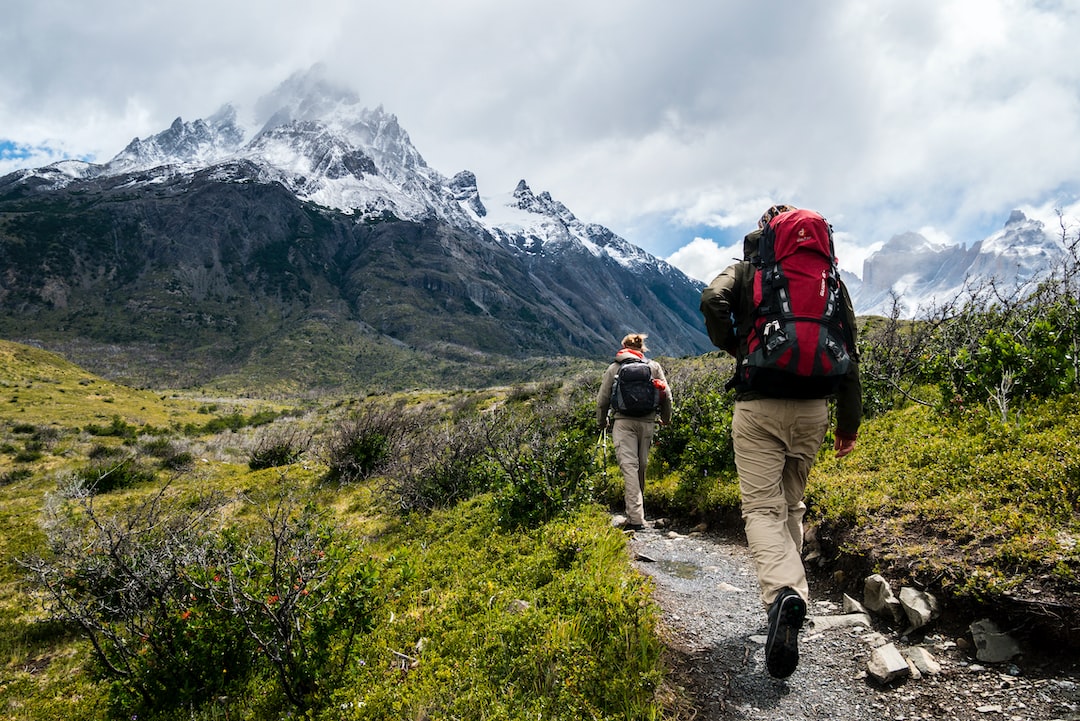When it comes to hiking, scrambling is an advanced technique that allows hikers to tackle steeper terrain and get that adrenaline pumping through their veins. With a blend of physical challenges and mental stimulation, scrambling provides those unyielding hikers with an enjoyable obstacle that adds excitement to their otherwise typical trail experience. But, as with all activities that involve a certain level of risk, it is crucial to be equipped with the appropriate knowledge about techniques and essential safety tips before embarking on a scrambling adventure.
Scrambling combines hiking and rock climbing, requiring agility and sure footing. Key techniques include the three points of contact, identifying handholds and footholds, evaluating loose rocks or foliage, selecting optimal routes, and avoiding overhanging rocks or unstable terrain. Ensure safety by wearing appropriate gear, knowing your limits, and communicating with your hiking partners.
What Is Scrambling?
Scrambling is a type of outdoor activity that falls between hiking and rock climbing. It involves ascending rocky terrain using both your hands and feet while staying close to the ground. Unlike rock climbing, which typically requires ropes and other protective gear, scrambling is usually performed without such equipment.
Scrambling has different grades, which are labeled according to the type of terrain and the extent of difficulty involved. The easiest grade, Class 1, involves simple hiking on well-defined trails. The difficulty gradually increases through Class 2 and Class 3 terrain, where the hiker must rely on both balance and handholds for support. The last of the scrambling grades, Class 4, calls for more advanced skills and may require the use of ropes for increased safety, as falls from this grade can lead to serious injuries or even be fatal.
What Are the Key Scrambling Techniques?
Acquiring a solid foundation for effective scrambling starts with learning essential techniques. This section aims to present some crucial techniques that every aspiring scrambler should be aware of.
Three Points of Contact
The primary concept underlying safe scrambling is maintaining three points of contact at all times. This means that hikers should always have two hands and one foot or one hand and two feet in contact with the rock, ensuring both balance and stability.
While it may be tempting to rush or use shortcuts, refrain from doing so, as an unexpected slip or loss of footing can have disastrous consequences. Taking the time to analyze the terrain, choose strategic hand and footholds, and maintaining three points of contact contributes to safer, more controlled scrambling.
Proper Foot Placement
Although using your hands to help maintain your balance and find stable footholds is essential. Your feet serve as a reliable source of stability and support. Developing the ability to trust your feet is essential for scrambling success. Utilize the inside and outside edges of your boots to create friction or “smearing” against rocks so that they grip even the smallest protrusions. This will help increase balance and decrease the reliance on handholds.
Rotation Techniques
Rotating your body relative to the wall is an effective technique for improving your overall stability and control during the ascent. Two rotation techniques are particularly useful for more advanced scrambling:
1. Drop Knee: This technique involves bending your inside knee and placing your foot on the rock while your other leg serves as the counterbalance.
2. Flagging: This technique comprises extending one leg outwards and pushing it against the wall, with the objective of shifting the body’s center of mass closer to the wall. Flagging can be used in tandem with other techniques for increased stability and balance.
How Can You Stay Safe While Scrambling?
Before embarking on an adventurous scramble, it is crucial to prioritize safety above all else. The rugged terrain scramblers face demands cautious, responsible, and well-prepared individuals who relentlessly prioritize safety every step of the way. With that in mind, the following safety tips should form the cornerstone of every scrambler’s adventure.
Choose the Right Terrain
Research the trail and its terrain before you set out on a scramble, and make sure you choose one that aligns with your scrambling skills and experience. In my experience, it is better to underestimate your ability and opt for a less challenging scramble than choose one out of your league and run the risk of feeling overwhelmed or in danger. Start with lower graded scrambles and work your way up as your confidence and competence grow.

Learn from an Expert
Accompanying an experienced scrambler or joining a club with trained leaders can offer invaluable practical knowledge and guidance during a scramble. A companion with experience and skill can demonstrate appropriate techniques, evaluate your performance, and provide real-time input that can significantly boost your scrambling ability and safety awareness.
Wear the Proper Gear
Selecting the right gear goes a long way toward ensuring a safe scramble. A comfortable, durable helmet to protect your head from falling rocks is an essential piece of equipment. Furthermore, invest in specialized scrambling or approach shoes that boast sticky rubber soles, providing better grip and friction on slippery, rocky surfaces.
Continue
Know Your Limits
One of the most important safety precautions for scramblers is to be in tune with your physical and mental limits. It is better to turn back or rest if you find yourself feeling exhausted or uncomfortable on the trail. Scrambling can be incredibly rewarding, but also tiring and dangerous if attempted when fatigued or distressed.
Stay Aware of Weather Conditions
Plan your scrambling adventures around favorable weather conditions, and become acquainted with the local weather forecasts before embarking on any scrambling trip. Slippery or icy rock surfaces and poor visibility due to rain or fog create challenging conditions and amplify the risks associated with scrambling. If the weather takes a turn for the worse during your scramble, it may be best to call it a day and return at a safer time.

Practice Route-Finding Skills
Navigating through difficult terrain is a skill that comes with experience and practice. Developing strong route-finding skills will help you identify the best paths and handholds, in turn minimizing the risk of accidents and wasted energy. Moreover, route-finding allows you to be better prepared for unexpected challenges and potential detours during a scramble.
Carry Essential Supplies and a Well-Stocked First Aid Kit
When packing for your scrambling adventure, ensure you have all the necessary items with you, including ample water, snacks, navigation tools, and a well-stocked first aid kit. It is vital to be prepared for minor injuries such as scrapes or sprains, as well as more severe injuries. Familiarize yourself with first aid principles and potentially life-saving techniques, such as immobilizing an injured limb or staunching heavy bleeding.
Communicate Your Plans
Be sure to inform a trusted friend, family member, or park staff about your scrambling destination, route plans, and estimated time of return. In the event of an emergency or unexpected delay, having someone aware of your whereabouts can prove invaluable for initiating a timely search and rescue effort.
Incorporating these scrambling techniques and safety tips into your outdoor adventures will not only enhance your enjoyment of the sport but also ensure that you are well-prepared to navigate the challenges posed by this thrilling and engaging activity. Remember to respect the terrain, prioritize safety, and make informed decisions to get the most out of your scrambling experiences.
Developing Your Scrambling Skills
As with any outdoor activity, practice makes perfect when it comes to scrambling. Regularly engaging in scrambling on various terrains will gradually improve your agility, balance, and confidence on the rocks. Here are some tips to keep developing your scrambling skills:
Start with Indoor Climbing
Indoor climbing gyms provide a controlled environment for beginners to practice and build strength before venturing out on real rock. This is an excellent opportunity to experiment with different handholds, placements, and movement techniques, which can then be applied outdoors.
Participate in Scrambling Workshops
Consider enrolling in workshops or courses offered by local mountaineering clubs, outdoor centers, or professional guiding services. These programs will provide hands-on instruction on scrambling skills, safety measures, and rescue techniques under the supervision of trained experts.
Challenge Yourself Progressively
Consistently pushing yourself to try more difficult scrambles helps in enhancing your skills and expanding your comfort zone. However, be mindful of taking calculated risks and gradually increase the difficulty of your scrambling routes rather than attempting a significant leap in difficulty, which may lead to accidents or injuries.
Learn from Other Scramblers
Engaging with fellow scramblers can broaden your knowledge and provide inspiration for future scrambles. You can exchange advice, discuss new techniques or gear, and share experiences about specific routes. Joining online forums, attending local meetups or participating in organized events can help you connect with other scrambling enthusiasts.
Avoiding Environmental Impact While Scrambling
As responsible scramblers, it is our duty to minimize our impact on the environment and respect the natural habitats we traverse. When scrambling, practice the principles of Leave No Trace, and be mindful of the following considerations:
Stick to Established Routes
Whenever possible, follow existing routes and avoid creating new paths or cutting switchbacks. Trampling over sensitive vegetation or disturbing wildlife habitats can have long-lasting, negative consequences on the environment.
Choose Durable Surfaces
Opt for rocky, dry terrain when planning your scramble, as these surfaces often suffer less ecological impact. Avoid scrambling on wet or muddy routes, as this can cause soil erosion, damage vegetation, and increase the risk of injury.

Minimize Rock Damage
Be gentle with rock features such as flakes and pockets to prevent damage. Avoid forcibly leveraging or prying rocks, as this can compromise the integrity of the rock and decrease its stability for future scramblers.
Pack Out What You Pack In
Carry a trash bag with you and ensure all your litter, including food scraps, is removed from the scrambling site when you leave. Encourage your fellow scramblers to do the same and educate them about responsible environmental practices.
In conclusion, scrambling provides an exhilarating and challenging addition to hiking that demands both physical and mental prowess. By learning essential techniques, adhering to safety guidelines, and respecting the environment, you can enjoy scrambling as a thrilling and rewarding outdoor activity. Continue to develop your skills, challenge yourself, and stay safe while exploring the exciting world of scrambling.





